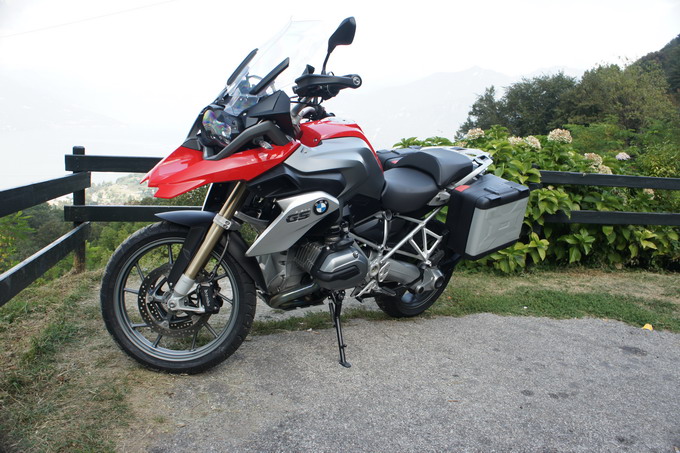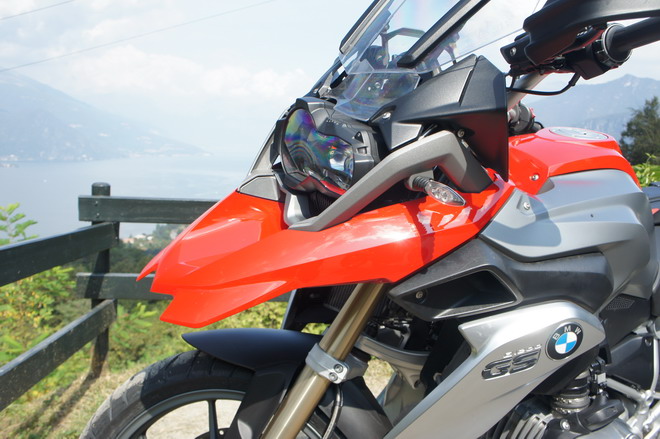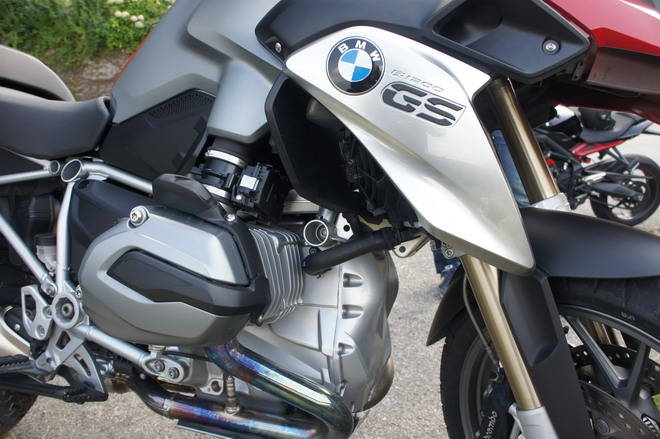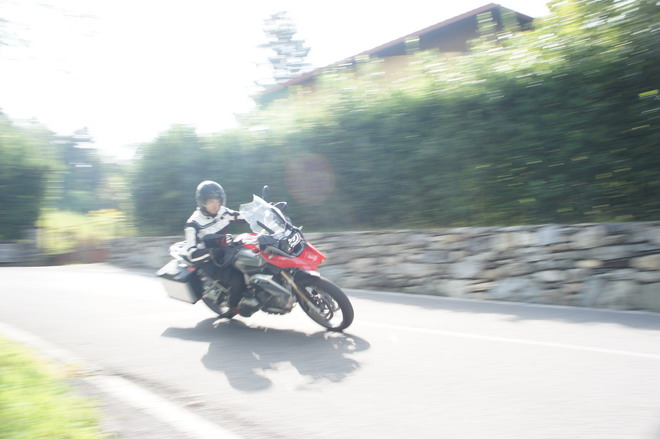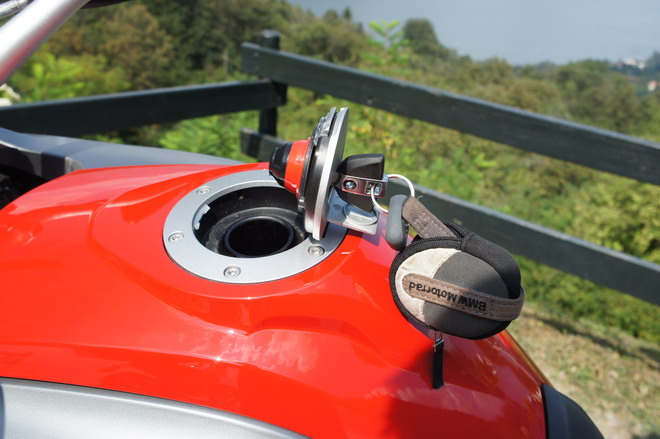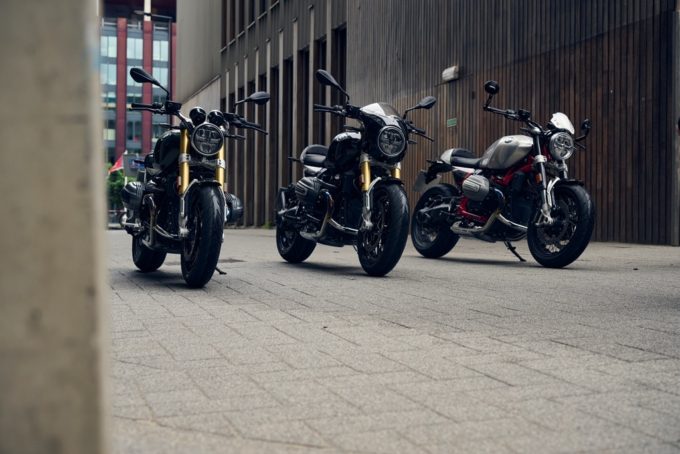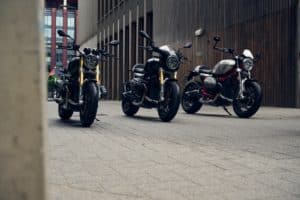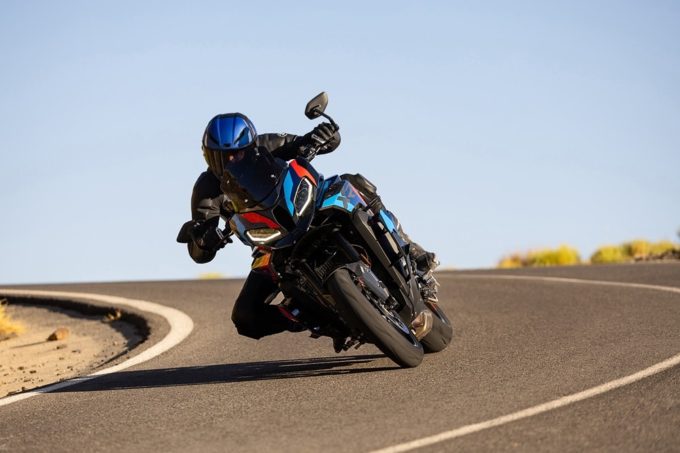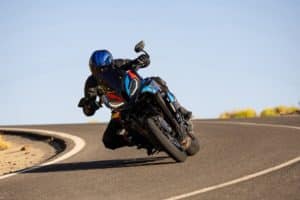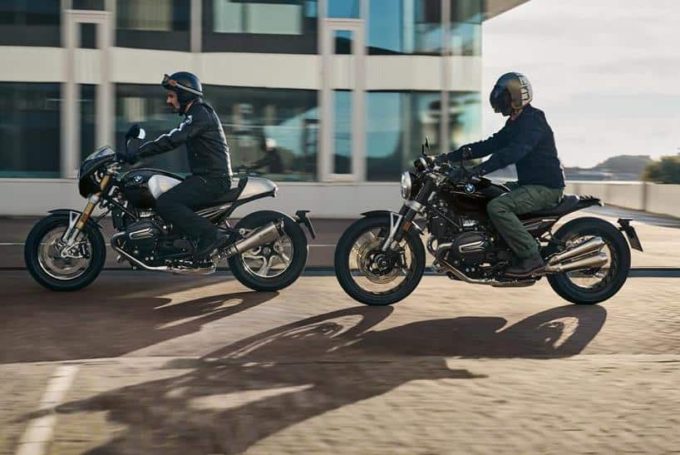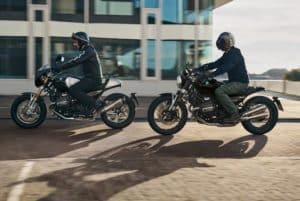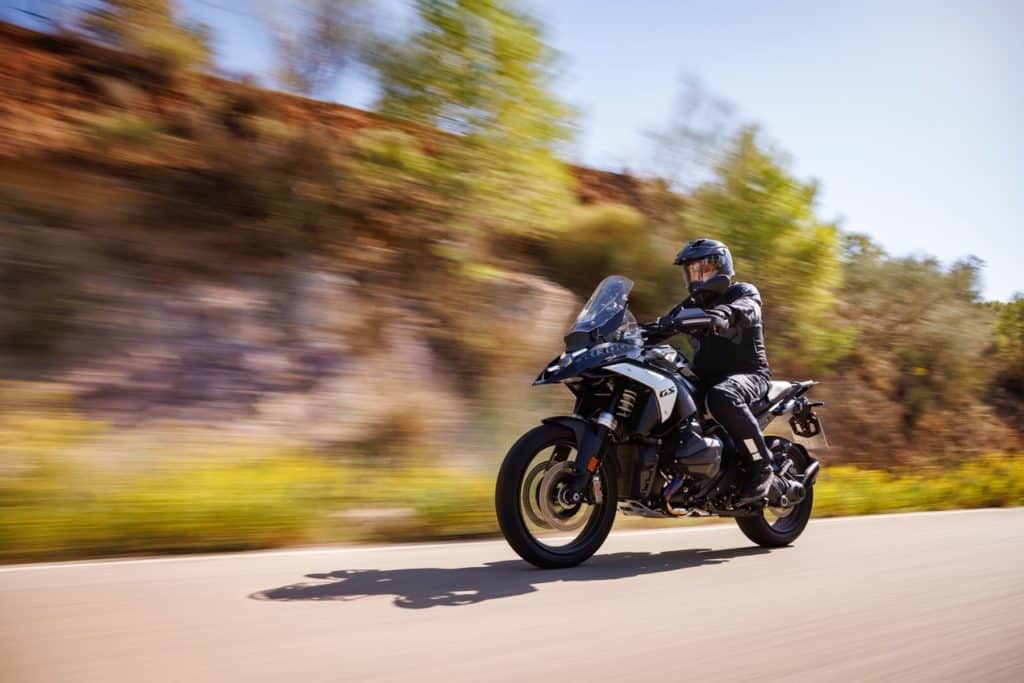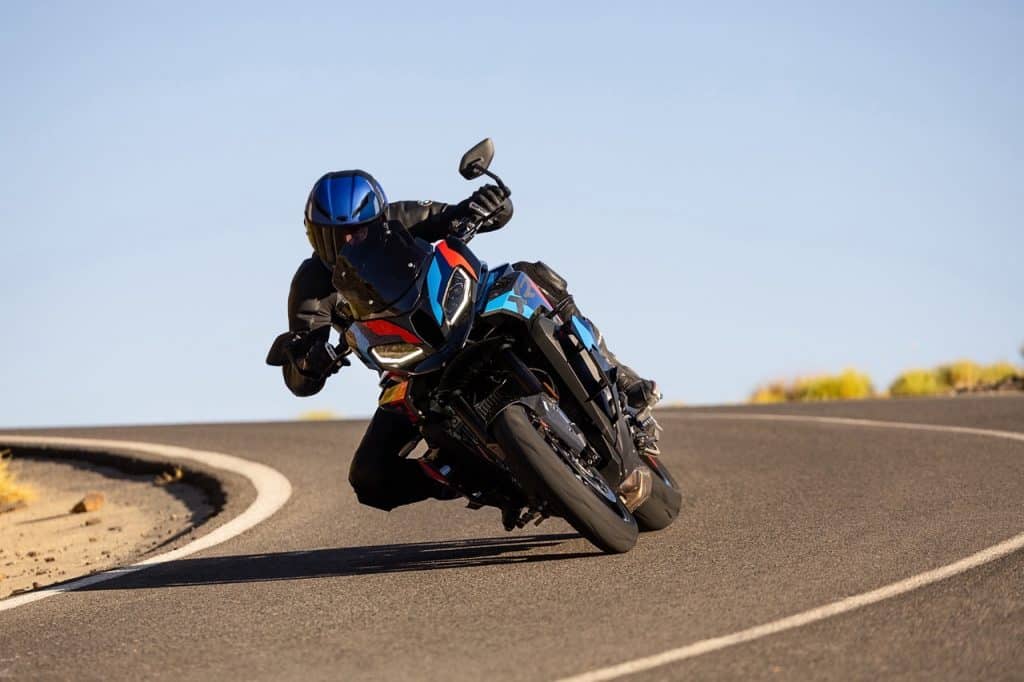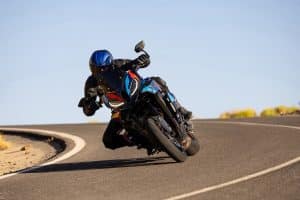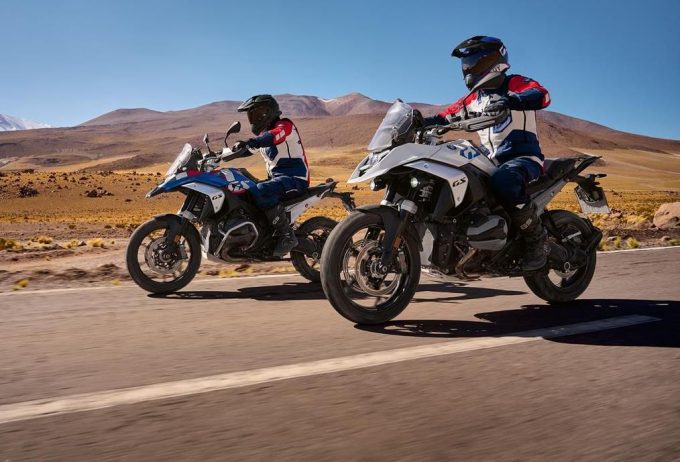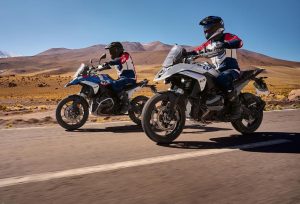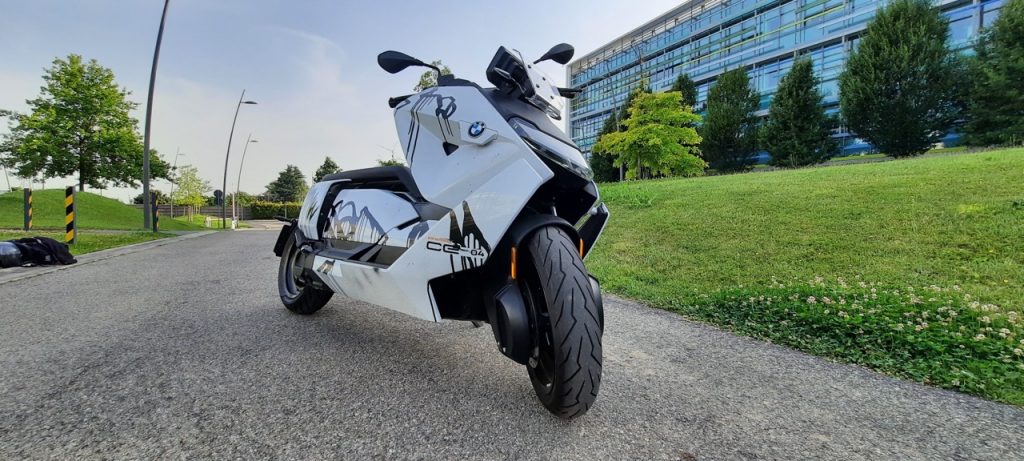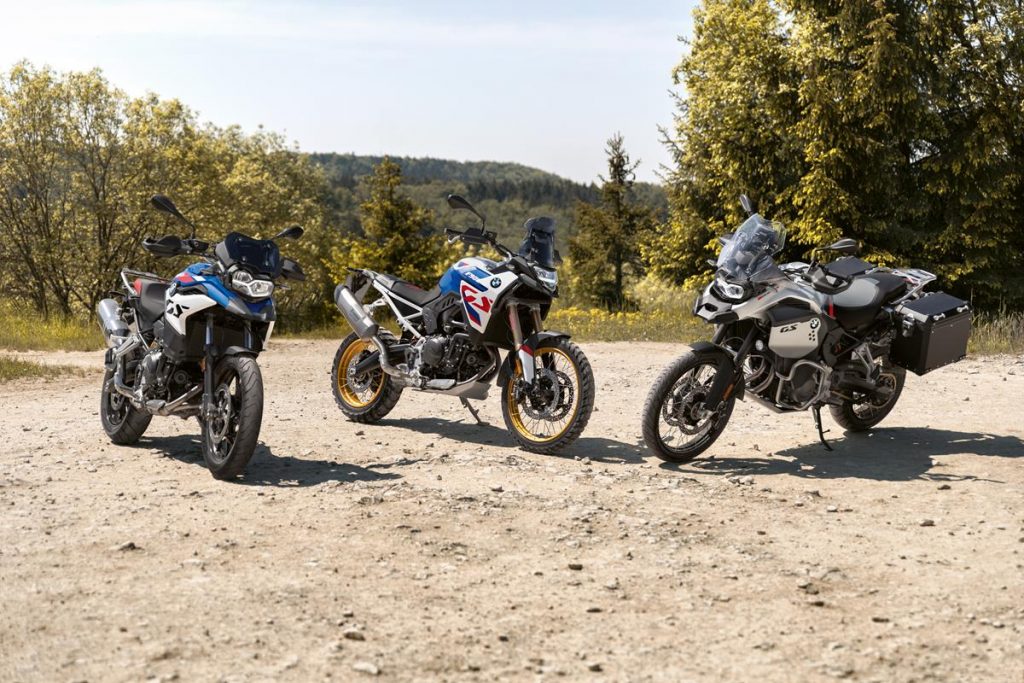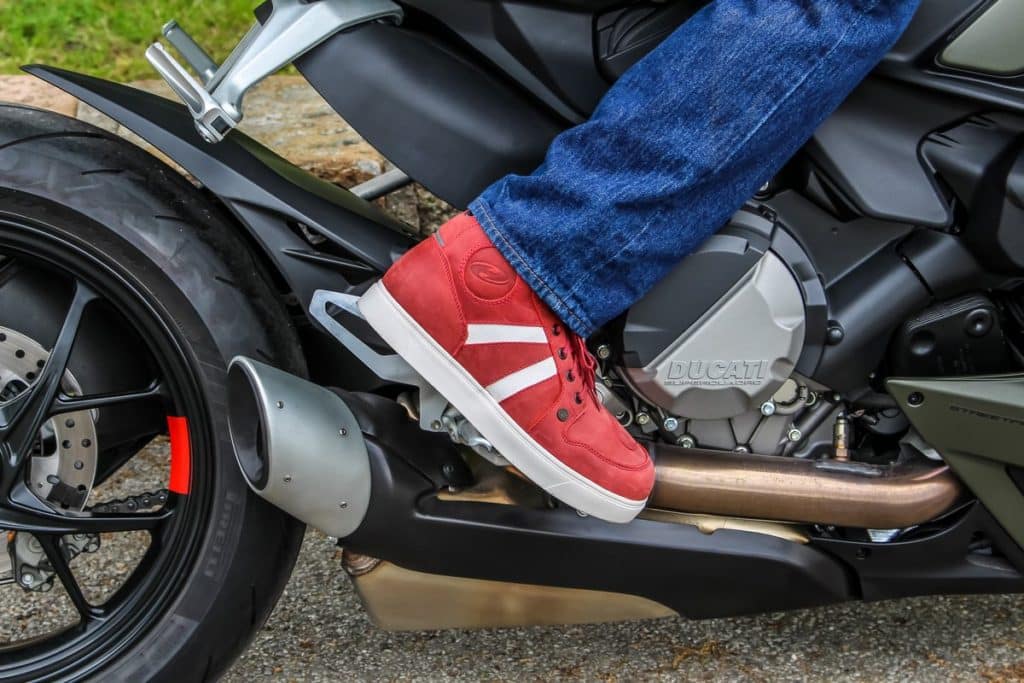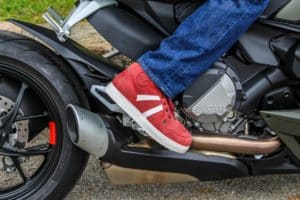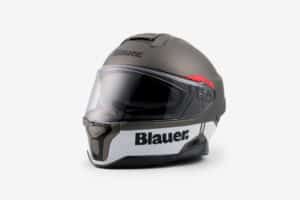BMW R1200GS – Road test
The revolution of a winning and almost perfect product
The success of the GS 1200 was such that it did not require a revolution. It would have been enough to update the current model without distorting it. But we know that to maintain leadership for a long time we need to change more and more often. Evolve. We need to chase and overtake the competition which, otherwise, would take over. This was the case for the new BMW R1200GS, whose boxer engine definitively abandons air cooling in favor of liquid cooling. Mandatory action to obtain power levels in line with her fierce opponents. But faced with an opportunity to change so radical, the Munich technicians certainly didn't hold back, radically modifying practically the entire bike. The result is a big step forward from any point of view, with a GS much meaner than before, just as comfortable and, if it were still possible, increasingly devoted to long journeys. Defects? More heartfelt than technical. A bit of tradition is given up, sacrificed on the altar of performance and modernization.
Aesthetics and finishes:
rating: 
Distorted but true to itself, meaner in look and complete in equipment
The GS revolution, which was born around its new engine, concerns the entire bike. The cardan now comes out on the opposite side, and it comes like this the position of the muffler was also reversed which inevitably ends up on the right. BMW considers it a step forward, because it makes the act of getting on a motorbike more accessible, especially when the motorbike is "hot". Even more evident at first glance, however, is the definitely meaner cut, with taut lines and aggressive look, which BMW wanted to give you. The front headlight maintains a shape similar to the previous one and now includes a powerful LED daytime light (optional), similar to those used in the automotive field. In addition to the headlight, the front part changes a lot, with the new ones side conveyors which bring fresh air to the two compact water radiators, very leaning forward, more for aesthetic than functional reasons. Another striking detail, but one that didn't completely convince us, is the "M" created on the front mudguard, shaping it differently than before. The intention was to make it more modern and sporty, but the result leaves us perplexed to say the least. To embrace this new engine there is also a new chassis, which is a double beam, to which, and here is another big news, the rear subframe is now screwed on, and so it is possibly removable and replaceable individually in the event of a collision. On the old GS things were much more complicated, because it was welded to the main beam. The classic one is attached to this new frame, even if with the reversed side, single-sided paralever, which continues to host the broadcast, but which comes now extended by 50 mm, looking for greater traction. All these changes make the silhouette of the bike slimmer in the central part, also thanks to the repositioning of the engine intake, which now leaves greater space for the driver's legs, making the GS even more comfortable, especially in typical enduro riding standing on the footrests. Continuing to talk about ergonomics, to the historic adjustment of the height of the rider's seat, which has existed for 20 years now, that of its longitudinal inclination has been introduced, and even that of the passenger can now be positioned in a second, more advanced mode. The bags are new, and it couldn't be otherwise, given the movement of the exhaust from one side to the other. However, the technical limit of the muffler side bag remains, for obvious reasons of sacrificed dimensions. Even with the convenient possibility of varying the size of the rigid bags, which open and close with a lever placed inside them, the right one still cannot accommodate a helmet. Small flaw: the largest bag of the pair ends up on what, in our opinion, is the wrong side. In fact, when the motorcycle is stationary on the side stand, it remains facing downwards, making its use less convenient. Once you get on the motorbike, the first thing you notice is thecrowding of the electrical blocks of the handlebar controls. Especially the left one, from which multiple functions are managed, which are however intuitive and easy to memorize. He can recall them all without having to look where his fingers are placing. The historian is lost, although perhaps a little uncomfortable, separate arrow control, compared to the more classic single command on the left. Some purists from the propeller house will turn up their noses, yes as if a Porsche had the ignition switch on the right, but we cannot deny that the new command is definitely simpler and easier to use, especially for those approaching a BMW motorcycle for the first time. Tradition is therefore lost in the face of greater practicality. Even if it is a detail, we were pleasantly surprised by another novelty, the solution to a historic problem of modern BMWs in recent years: the fuel level reading. It may seem absurd, but the transition from the classic float to a more modern system with thermal sensor was not painless, on the contrary. And we know something about it given the experience with an F800R which left us stranded with 3 bars still indicated on the display. But the tank was empty! Now, however, when you turn on the ignition after refueling, the level and autonomy are updated almost instantly and correctly.
Engine and performance:
rating: 
With 15 more horsepower, but above all a completely different power delivery, how wicked!
While maintaining the bore and stroke values remain unchanged, therefore with the same displacement, we find ourselves faced with a completely new engine. We go through a system from air/oil cooling with the small radiator placed behind the "beak" of the front mudguard, to a much more modern air/liquid system with 2 lateral radiators, one on each side. Going into more detail, the most stressed and therefore hottest elements around the combustion chamber are now touched by the cooling liquid, while the others remain cooled by the air, via the classic fins, placed on the equally classic and protruding BMW cylinders . Numbers in hand we are talking about a cooling divided as follows: 35% liquid and 65% air. The oil loses its radiator but obviously maintains, in addition to its lubrication function, also that of containing temperatures. The double candle was also lost per cylinder, since we have now returned to a more classic single central candle. The new engine should also guarantee easier, and less expensive, maintenance, having been designed to facilitate periodic control interventions. Looking at it alone, in the photo, the new boxer results far more compact and you can perceive the improvement made in centralization and lowering of the masses. With the transition to liquid cooling it "gets bigger" by only 2,7 kg, but with a center of gravity much closer to the ground. However, the timing chains now make a longer and more twisted turn, resulting in greater noise, which can be clearly heard by placing your ear close to the heads. Test that, now, they involve feeding from the top and discharging from the bottom. They are basically rotate 90° compared to before. Furthermore, the two camshafts now perform separate functions. I am one dedicated to the exhaust valves and the other to the intake ones. As a demonstration of its tourist vocation, and given that the GS is designed for long distances and trips even to remote places, the new twin-cylinder is now also able to work in the "mono" version. In case of malfunction of one of the two cylinders, the other still guarantees the possibility of taking you home, even with half the engine broken! Another big evolution in mechanics: gearbox and clutch, previously separate, are now in a single casing. The clutch earn a system slipper, definitely useful for solving the physiological problems of the cardan shaft, which can usually cause some trouble during steep climbs, especially on slippery surfaces. The friction it is no longer dry and with a single large disc, but oil bath and multi-disc. notable improvement it is the possibility of using it now without the fear of immediately putting it into crisis, as happened too often previously. Against it loses a pinch of modulabilityHowever, this defect is only noticeable when using the motorbike off-road and not when riding on the road. In the face of a better clutch, the evolution in the operation of the gearbox seems strange to us, to say the least. On the last GS, levels of clutch silence had been reached that had made us forget about the historic "stock" ones. Unfortunately on the new GS the mechanical noises when engaging first and second gear are much more evident. The "stock" of engagement at traffic lights is clearly noticeable and we found it more difficult than before to engage neutral with the bike stopped. Other aspects were given priority, perhaps even that of keeping theincrease of 15 horsepower in the engine, although it is said to be over 20 more than before. There are 125 in total, compared to 110 for the old engine. In driving the difference is marked because the new GS is decidedly meaner, and approaches its competitors with a more sporting vocation and distances itself decisively from the tourist ones. Available as an option, the ASC features, an absolute novelty for the GS, 5 delivery modes. This system does not vary the power so much, but the way in which it is delivered. In Dynamic, for example, yes it even makes the tires difficult when exiting corners, and it's easy to feel it slip when you turn off the traction control. It manages to bring out the limits of even the new Michelin Anakee III. The same tire that seemed perfect to us, even when riding at the limit, on the R1200 GS Adventure, which we tested only a few weeks ago, and which still features the "old" and more sly air engine.
Ride and handling:
rating: 
Even more balanced, thanks to the centralization of the masses, we are definitely at the top of the category
The bike is new, revolutionized, decidedly improved from many points of view thanks to the new water/air boxer. But GS doesn't just mean engine. The "old" GS was in fact a category reference for its rideability and great handling, especially when compared to its weight. Will the new one be as good as the model it replaces? The answer is certainly yes! It increases by 8 kg, now 238 in running order, but this slight increase is completely imperceptible because the weight is decidedly better distributed, with great attention on the part of the designers to centralize the masses. The engine in particular pursued this objective. The increase due to the transition to liquid cooling corresponds to a reduction of unsprung masses, all in favor of driveability. The rims lose a good 2,5 kg, even if the tires grow in size and therefore in weight. The difference at the rear is evident, where the GS now features a 170/60 to replace the 150/70. At the front it goes from 110/80 to 120/70, always on 17 rear and 19 front rims. Throttle control is now “ride by wire”, innovative and advantageous from some points of view, however brings some small initial annoyances compared to the classic cable. In fact, it is not uncommon to find yourself with the bike off, because it is more sensitive and you have to acquire the automatisms and synchronization that you had with the conventional control. The front brakes switch to radial calipers, that However, they are only beneficial from an aesthetic point of view and “fashionable”, because from a practical point of view they do not improve in effectiveness. It's a shame, because the new GS goes and makes you want to go faster. The discs are always 305 mm and are smaller than the 320 that many of its competitors now fit, and the difference is noticeable. If it is true that, albeit with a decisive injection of nastiness, the new GS also remains mainly touring, and that we are not faced with a "geek" bike, we would however have expected something more from the brakes department. We really liked it though keeping all settings in memory, including the exclusion of traction control, without losing it every time you turn the bike off and on again. Although it may make some smile or turn up their noses, the new GS is available with a Optional really very useful, especially for long journeys and for motorway routes with limits that are often difficult to respect. In fact, a moment of distraction and a touch too much gas are enough to find yourself well above the permitted speed. Everything becomes easier with the Tempomat, the speed regulation system which is not controlled, as would seem obvious, with the wheel on the left side of the handlebar, but with a button and a selector to regulate the speed. Obviously if you leave the handlebars with your right hand they will look at you like a Martian, given that it is still a rare accessory on motorcycles. The wheel is used to move and manage the functions of the navigator, available as an option.
Price and consumption:
rating: 
The new R1200GS changes everything and improves a lot, but the price is not affected
Available in four colors, red, white, blue and grey, the price list of the new BMW R1200GS is 15.650 euros, even if it is easy to increase the bill, given the list of options, some of which are highly recommended. The test specimen was fitted with several, for a total of well over 3.000 euros. The Dynamic Packet 2, which includes the addition of some on-board computer functions, ESA electronic suspension control, ASC traction control, and GSP preparation, costs over 2.400 euros alone. Consumption, already excellent on the old GS, remains substantially identical. They improve somewhat in city use, while they are unchanged in extra-urban and motorway use. Of note is a small increase in terms of autonomy, given that the capacity of the tank increases by half a liter.
PROS AND CONS
We like it:
Everything changes but it remains an absolute reference, decidedly meaner than before
We do not like it:
Not everything that changes is immediately pleasing, we would have expected something more from the brakes and gearbox
BMW R1200GS: the Motorionline Report Card
| Motor: |      |
| Handling: |      |
| Gearbox and transmission: |      |
| Braking: |      |
| Suspensions: |      |
| Guide: |      |
| Pilot comfort: |      |
| Passenger comfort: |      |
| Equipment: |      |
| Quality price: |      |
| Line: |      |
| Consumption: |      |
if you want to always be updated on our news
Follow us here

